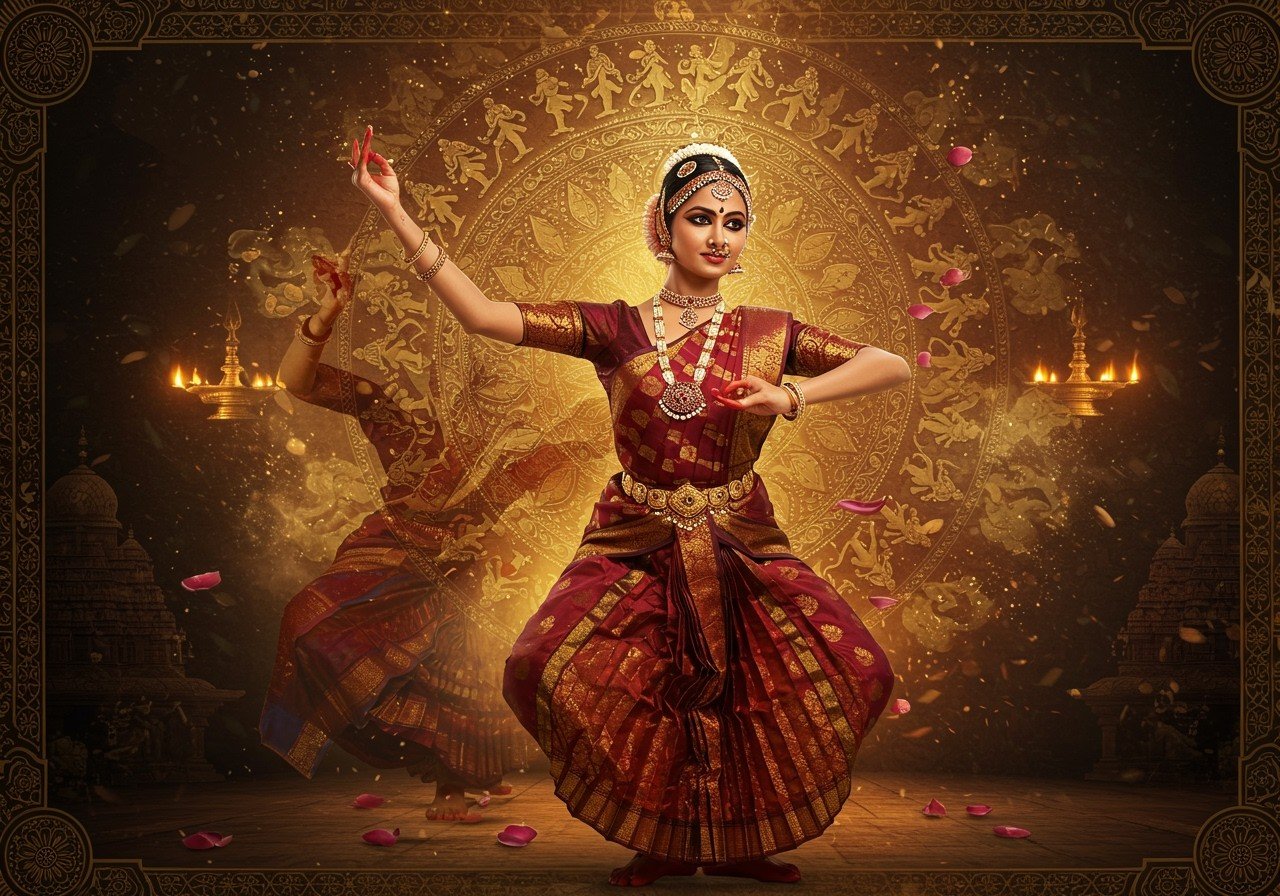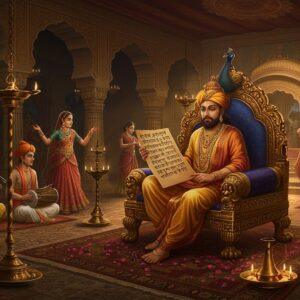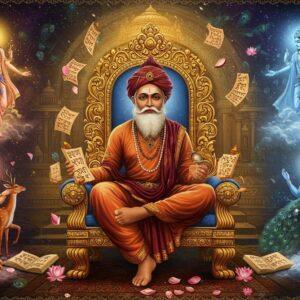
Bharatanatyam, a captivating classical Indian dance form originating from Tamil Nadu, has mesmerized audiences for centuries. Revered for its spiritual depth and cultural richness, it began as a sacred ritual in Hindu temples. This article delves into the fascinating journey of Bharatanatyam, from its ancient origins to its modern-day significance.
Historical Origins and Evolution
Bharatanatyam’s roots trace back to the Natya Shastra, an ancient Indian treatise on performing arts attributed to sage Bharata Muni, compiled between 500 BCE and 500 CE. Initially performed by Devadasis (temple dancers) in sacred courtyards, this dance served as a spiritual offering. Legends even suggest that Lord Brahma created Bharatanatyam and imparted it to Sage Bharata. Further evidence of its existence is found in the ancient Tamil epic Silappatikaram around the 2nd century CE. Temple sculptures from the 6th to 9th centuries CE illustrate its refinement as a performance art. The Brihadeshwara Temple in Thanjavur stands as a testament to its central role in dance since approximately 1000 CE.
During British colonial rule, Bharatanatyam faced suppression, culminating in a ban in 1910 due to its association with temple dancers and accusations of impropriety. However, the early 20th century witnessed its resurgence, thanks to revivalists like E Krishna Iyer and Rukmini Devi Arundale. They disassociated it from erotic elements, making it accessible to a wider audience, particularly middle and upper-class Indian women.
Today, Bharatanatyam flourishes as a popular classical dance form performed globally. It encompasses both religious and secular themes, even incorporating fusion styles, demonstrating its adaptability and enduring appeal. Modern stage productions showcase its versatility by presenting dance-based performances on non-religious ideas, making it increasingly popular throughout India.
Symbolism and Meaning
Bharatanatyam transcends mere dance; it is a rich tapestry of symbolism and meaning. Each performance unfolds a narrative through intricate hand gestures known as mudras. These mudras, combined with expressive eye movements and facial expressions (abhinaya), convey profound emotions and narratives often drawn from Hindu mythology and epics.
The dance adheres to a structured format, commencing with the alarippu (invocation), a prelude that warms up the dancer and establishes a spiritual ambiance. The jatiswaram emphasizes pure dance movements devoid of narrative, focusing on rhythm and melody. The heart of the performance, the varnam, sees the dancer narrating a story through emotive movements, captivating the audience with tales of gods and heroes. The concluding tillana is a vibrant display of fast-paced, rhythmic movements, leaving viewers spellbound.
Costumes and ornaments play a vital role. The traditional attire, typically a brightly colored silk sari adorned with intricate jewelry, enhances the storytelling. These embellishments symbolize different characters and moods, enriching the visual narrative.
Technical Aspects and Training
Mastering Bharatanatyam demands dedication and discipline. Training often commences at a young age under the tutelage of a Guru (teacher). The dance form comprises three core elements: nritta (pure dance), nritya (expressive dance), and natya (dramatic storytelling).
Classes typically begin with warm-up exercises to cultivate stamina and flexibility. Students then progress to practicing fundamental steps known as adavus, the building blocks of Bharatanatyam. Over time, they learn complex sequences and develop their repertoire. Theoretical understanding is also crucial, as it provides dancers with insights into the cultural and historical significance of the art form. The Guru’s role is paramount, transmitting knowledge and tradition across generations. They not only guide students in technique but also instill in them the spiritual essence of Bharatanatyam.
Contemporary Influence and Global Reach
While preserving its traditional core, Bharatanatyam has embraced contemporary themes. Modern choreographers integrate multimedia elements and innovative concepts, ensuring its resonance with modern audiences. This fusion enriches Bharatanatyam, broadening its appeal across cultures.
International dance festivals celebrate Bharatanatyam, showcasing its beauty and depth on global platforms. Its influence extends beyond Indian culture, inspiring other dance forms and fostering cultural exchange. Digital platforms have played a crucial role in its global popularization. Online classes offer accessibility to enthusiasts worldwide, promoting continuity and evolution.
Cultural Significance and Community
For the Indian diaspora, Bharatanatyam serves as a vital link to their heritage. It fosters a sense of community, pride, and cultural identity among practitioners and audiences. This cherished dance form unites generations, preserving traditions while embracing change.
In our fast-paced world, Bharatanatyam offers a tranquil refuge in spirituality and creativity. It invites new generations to embrace its enduring legacy, celebrating India’s rich cultural heritage.
Essential Bharatanatyam Items at Poojn.in
For those seeking authentic Bharatanatyam accessories and ritual items, Poojn.in offers a wide selection. Discover traditional dance accessories and puja items essential for performances and practice:
- Temple jewelry sets: Explore matching necklaces, earrings, and headpieces, adding elegance and tradition to your attire. Find exquisite temple jewelry sets at Poojn.in.
- Pure brass bells (ghungroo): Enhance the rhythmic beauty of your dance with high-quality ghungroo in various sizes. Browse our collection of brass bells.
- Practice sarees and costume materials: Find comfortable cotton practice sarees in vibrant colors and silk materials for crafting stunning costumes. Shop for sarees and costume materials at Poojn.in.
- Traditional alta, sandalwood paste, and other essentials: Complete your Bharatanatyam look with traditional alta (red dye), pure sandalwood paste for makeup, and other essential items. Discover all you need for your performance at Poojn.in.
- Puja items: Ensure reverence and tradition with our selection of puja items for stage worship, including brass lamps, kumkum, and other ritual essentials.Explore pooja essentials for your Bharatanatyam needs.
Poojn.in offers quality-certified products sourced directly from artisans and traditional makers. Enjoy secure payment options and convenient delivery across India.
Visit www.poojn.in for the complete range of Bharatanatyam accessories and ritual items. Our customer service team is available to assist you in selecting the perfect products to meet your specific needs.
Conclusion
Bharatanatyam stands as a timeless dance form, seamlessly blending tradition and innovation. It is a vibrant celebration of India’s rich cultural heritage, conveyed through symbolic gestures, expressive storytelling, and vibrant costumes. The dedication required to master this art reflects its profound significance, with each dancer embodying the spirit of generations past, preserving and passing on a treasured legacy. As Bharatanatyam evolves, it embraces contemporary themes while retaining its cultural essence, ensuring its continued relevance and global appeal. It offers a pathway to spiritual exploration, artistic expression, and a deeper connection to India’s cultural identity.
Explore the symbolism of Krishna’s flute
Learn about Krishna’s ten avatars


